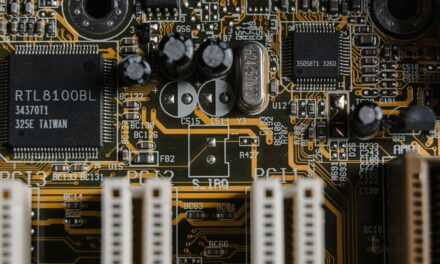
Alternative Payment Methods in 2023: The Shifting Financial Landscape

The financial industry is primed to be dynamic and has continually evolved to adapt to technological advancements and consumer behaviors over the years. And based on the current situation in 2023, it is evident that alternative payment methods (APMs) have become the driving force behind this transformation. Their rapid rise to prominence has reshaped the ways in which we transact, making it clear that the payment landscape of tomorrow will look vastly different from the past.
The Rise of Alternative Payment Methods
Traditional payment methods, such as cash and credit cards, have been the mainstay for a long time. However, with the new wave of digitalization, there has been a quickening move towards more diverse payment methods, which can be tailored to the unique needs of different users and markets. APMs encompass a vast range of options, from mobile wallets and payment apps to digital currencies and QR code-based payments.
Why Are APMs Gaining Traction?
- Convenience: Many of these methods, especially mobile wallets and apps, offer a seamless user experience. With just a few taps, payments can be made, saving both time and effort.
- Security: Given the advanced encryption technologies and biometric authentications integrated into APMs, they often offer a more secure way to transact, reducing the risk of fraud.
- Inclusivity: APMs open the door to financial inclusion. Many regions, especially in developing countries, have populations with limited access to traditional banking infrastructures. However, with mobile penetration on the rise, APMs enable these individuals to engage in digital transactions without the need for a bank account.
- Cross-border transactions: With global e-commerce booming, APMs facilitate smooth cross-border transactions, which accommodates different currencies and local payment preferences.
Types of APMs Dominating 2023
- E-Wallets: These digital wallets allow users to store funds and make online and offline payments. They have become ubiquitous, with giants like Apple Pay, Google Wallet, and Samsung Pay leading the charge.
- Cryptocurrencies: Bitcoin, Ethereum, and other altcoins have moved from being speculative assets to genuine payment methods for some businesses and platforms.
- QR Code Payments: Especially popular in regions like Asia, these QR code payments allow quick transactions by simply scanning a code using a smartphone.
- Buy Now, Pay Later (BNPL): A concept that has seen rapid adoption, BNPL services allow consumers to purchase products immediately and pay in installments. This method is especially popular with younger demographics who might be wary of credit card debts.
- Bank Direct Transfers: Methods such as UPI in India have made direct bank-to-bank transfers swift and straightforward, bypassing the need for cards or third-party apps.
- Voice-activated Payments: With the proliferation of smart speakers and voice assistants, making payments through voice commands is becoming a reality.
The Role of Integration
The sheer diversity of APMs available can be daunting for merchants. To maximize reach and cater to diverse customer preferences, businesses are integrating multiple payment methods into their platforms. This ensures a frictionless transaction process regardless of the customer’s preferred mode of payment.
Integration is not just about adding numerous payment options. It is about understanding regional preferences, currency requirements, and ensuring that the payment process remains as streamlined as possible. This is where platforms like Noda play a pivotal role, offering tools and solutions that allow businesses to incorporate various APMs seamlessly.
Challenges and Considerations
While the APM landscape in 2023 looks promising, it is not without its challenges:
- Regulation and Compliance: New payment methods often lead to a new set of regulatory challenges. Businesses need to be aware of local regulations, especially when operating in multiple countries.
- Fragmentation: The plethora of options can be confusing for both consumers and merchants. Standardization and integration solutions can help address this.
- Security Concerns: With increased digital transactions come increased cyber threats. It is vital to ensure robust security mechanisms, especially for newer methods like cryptocurrencies.
- Consumer Trust: Building trust among consumers is important when persuading them to adopt new payment methods, especially in regions where digital literacy might be lower.
Looking Ahead: The Future of APMs
The current progression of APMs points to continued growth and diversification. As technology continues to advance and integrate deeper into our daily lives, we can expect even more innovative payment solutions to emerge. Some future trends might include:
- Biometric Payments: Beyond just fingerprints, we might see retina scans, facial recognition, and even heartbeat patterns becoming methods of authentication.
- Integration with IoT: With more devices getting connected, your refrigerator might be able to order groceries to your shopping list automatically when they run out.
- Advanced AI and Machine Learning: These technologies can further personalize the payment experience, offering suggestions, automating repetitive transactions, and enhancing security through anomaly detection.
Round up
Although the year is not yet over, 2023 has been an exciting time in the dynamic world of payments. The shift towards APMs reflects a broader move towards digitalization, personalization, and global connectivity. As consumers and businesses become more digitally savvy, the demand for more efficient, secure, and convenient payment methods will only grow. While challenges persist, the potential of APMs to revolutionize the financial landscape is undeniable. Embracing these changes and innovating will be the key for businesses looking to thrive in this new era of transactions.


























